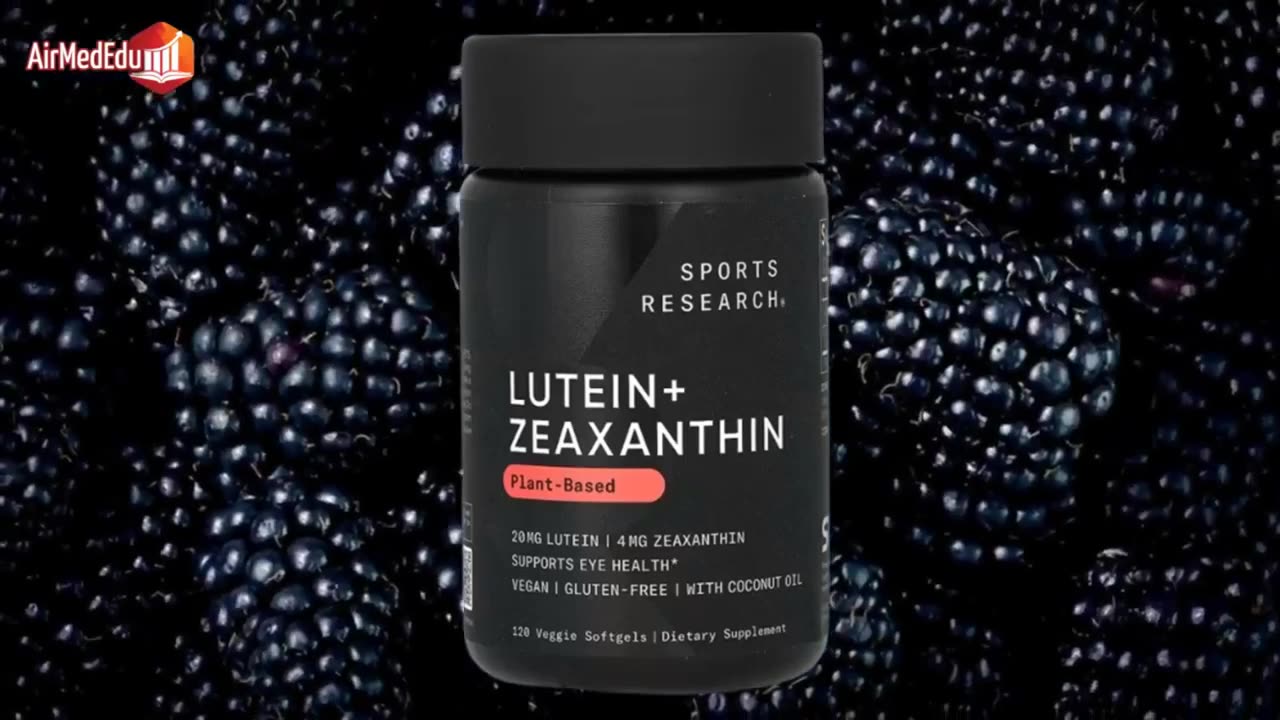Premium Only Content

Foods to Treat Loss of Visual Acuity
Visual acuity loss, also known as decreased clarity or sharpness of vision, is a common condition that affects millions of people worldwide. It manifests as difficulty focusing on near or far objects, blurred vision, or reduced perception of fine details. Its most common causes include natural aging such as age-related macular degeneration, nutritional deficiencies, prolonged exposure to ultraviolet light, chronic diseases such as diabetes or hypertension, and genetic factors. According to organizations such as the World Health Organization, this condition can progress if left unaddressed, impacting daily quality of life.
Nutrition plays a crucial role in managing visual acuity loss because many nutrients act as antioxidants that protect eye cells from oxidative stress and inflammation. General studies, such as those reviewed by the Academy of Nutrition and Dietetics, indicate that a diet rich in vitamins A, C, and E, as well as carotenoids such as lutein and zeaxanthin, may help slow the progression of age-related eye problems. However, it is important to emphasize that these foods do not cure the condition or replace professional medical treatments, such as eye exams or prescribed medications. Always consult a doctor before making changes to your diet, especially if you have preexisting conditions.
Carrots are a root vegetable known for their high beta-carotene content, a precursor to vitamin A, which the body converts into retinol, essential for retinal health and night vision. Research published in journals such as Retina highlights that beta-carotene helps prevent deficiencies that could lead to loss of visual acuity, such as xerophthalmia, and reduces the risk of cataracts and age-related macular degeneration by combating oxidative damage to the eyes. Carrots also provide fiber, vitamin K, and potassium, which support overall health. For a simple way to incorporate them into your diet, you can eat them raw in salads, grated into sandwiches, or steamed as a side dish. A practical suggestion is to add grated carrots to a morning smoothie with fruit for a no-fuss nutritional boost.
Spinach is a leafy green packed with lutein and zeaxanthin, two carotenoids that accumulate in the macula of the eye, acting as a natural filter against harmful blue light and reducing inflammation. According to reviews, these compounds may reduce the risk of progression of age-related macular degeneration and improve visual acuity by protecting photoreceptor cells. It's also rich in vitamin C, iron, and folate, which promote blood circulation in the eyes. To include it in your daily routine, try sautéing it with garlic as a side dish, adding it to omelets, or blending it into green smoothies. A simple idea is to prepare a salad of fresh spinach with tomatoes and a light dressing, making it accessible even for novices in the kitchen.
Apricots are juicy fruits loaded with beta-carotene and vitamins C and E, which function as potent antioxidants to neutralize free radicals that damage the lens and retina. General studies from the American Academy of Ophthalmology suggest that these nutrients help maintain the integrity of ocular tissues, potentially alleviating symptoms of aging-related visual acuity loss, such as lens opacity. Additionally, their fiber and potassium content support cardiovascular health, indirectly benefiting vision. To incorporate them, eat fresh apricots as a snack, or add dried apricots to fruit mixes or compotes. An easy suggestion is to add chopped apricots to plain yogurt for a quick and nutritious breakfast.
Pumpkin is a versatile vegetable rich in beta-carotene, lutein, and zeaxanthin, similar to those found in carrots, which promote vitamin A production and protect against oxidative stress in the retina. Research from institutions such as Johns Hopkins Medicine indicates that these compounds may help prevent or slow macular degeneration and improve visual adaptation in low-light conditions. It also provides vitamin C and fiber for overall health. To add it to your diet, roast it as a puree, stir it into soups, or use it in baked muffins. One simple way is to prepare a butternut squash soup with herbs, ideal for comforting meals on cold days.
Blueberries are a bluish berry packed with anthocyanins, flavonoids that improve blood flow in the eye's vessels and strengthen capillary walls, which can relieve eye strain and improve acuity in dark environments. According to articles in Harvard Health, these antioxidants reduce inflammation and protect against age-related damage, such as age-related macular degeneration. They are also a source of vitamin C and fiber. To incorporate them, eat fresh blueberries in cereal, frozen in smoothies, or in homemade jams. A practical idea is to blend them into a bowl of oatmeal for an energizing and eye-friendly breakfast.
Blackberries are notable for their anthocyanins and vitamins C and E, which act as shields against oxidative damage to the retina and lens. Scientific reviews indicate that these nutrients can support eye health by reducing the risk of cataracts and improving post-stress visual recovery. Their high fiber and manganese content add digestive benefits. To include it, use it in fruit salads, yogurts, or as a topping for pancakes. A simple suggestion is to prepare a light dessert with fresh blackberries and a touch of honey, perfect for a healthy end to a meal.
Adopting a balanced diet is key to maximizing the benefits of these foods. Aim for a variety of colors on your plates—the "food rainbow"—to ensure a broad spectrum of nutrients. Combine these foods creatively: for example, a salad with spinach, grated carrots, and blackberries, or a smoothie with pumpkin, blueberries, and apricots. Include moderate daily portions, such as a cup of green vegetables or a piece of fruit, within an appropriate calorie intake.
However, take precautions: do not overindulge if you have allergies or conditions such as kidney problems (due to potassium in some). Always consult a healthcare professional before making dietary changes, as nutrition is a complement, not a primary treatment. Avoid unsupervised supplements, as high doses can have adverse effects, as WHO studies warn.
In summary, foods such as carrots, spinach, apricots, pumpkin, blueberries, and blackberries offer valuable nutrients—such as beta-carotene, lutein, zeaxanthin, and anthocyanins—that, according to general scientific evidence, can help alleviate symptoms of visual acuity loss by protecting the eyes from oxidative damage and supporting retinal function. Incorporating them into a varied diet promotes not only eye health but also overall well-being. Remember, these are positive allies, but they do not replace regular medical checkups or prescribed treatments. With a balanced approach and consultation with experts, you can take proactive steps toward clearer, healthier vision.
-
 LIVE
LIVE
I_Came_With_Fire_Podcast
9 hours agoThe Right's Drift into Neo-Marxism & America's Populist Crossroads
164 watching -
 LIVE
LIVE
Amarok_X
2 hours ago🟢LIVE 24 HR STREAM? | ARC RAIDERS TO START | OPERATION 100 FOLLOWERS | USAF VET
59 watching -
 LIVE
LIVE
Pepkilla
2 hours agoDay 2 of Camo Grinding Black Ops 7 ~ Until My Brain Rots
103 watching -
 27:34
27:34
marcushouse
4 hours ago $0.59 earnedWOW! I Was NOT Ready For This One… 🤯 | Starship & New Glenn Lead The Race!
2132 -
 LIVE
LIVE
MrR4ger
4 hours agoD4RK and D4RKER TO START THEN ARC R4IDERS W/ TONYGAMING AND AKAGUMO
93 watching -
 LIVE
LIVE
Shield_PR_Gaming
2 hours ago11/15/25 Hittin some Bodycam a bit as well as other games!
32 watching -
 5:39
5:39
Talk Nerdy Sports - The Ultimate Sports Betting Podcast
15 hours ago10 College Football Bets You MUST Take Today (Nov 15)
3.17K -
 1:02:31
1:02:31
Wendy Bell Radio
6 hours agoPet Talk With The Pet Doc
15K27 -
 23:12
23:12
Jasmin Laine
21 hours agoPoilievre LOSES PATIENCE—His “Who CARES?” Moment SHOCKED Everyone
107K39 -
 5:00:07
5:00:07
Sgt Wilky Plays
5 hours agoFirst Run of Black Ops 7 after the Beta | Multiplayer
23.9K